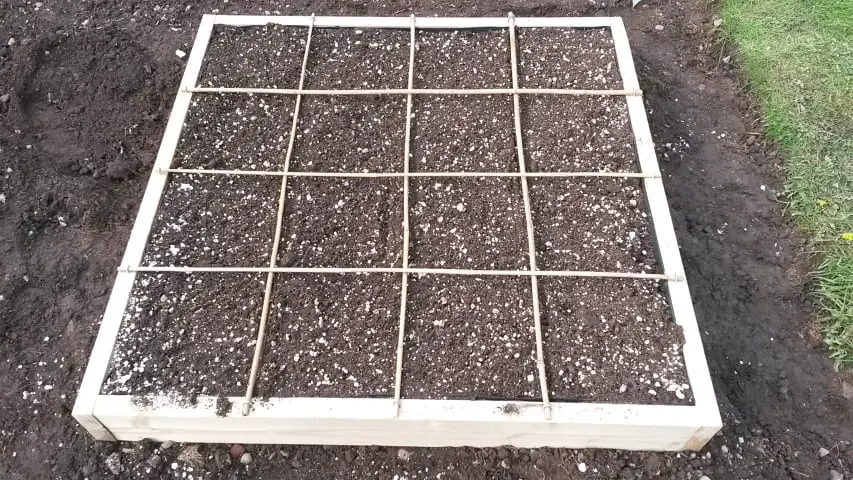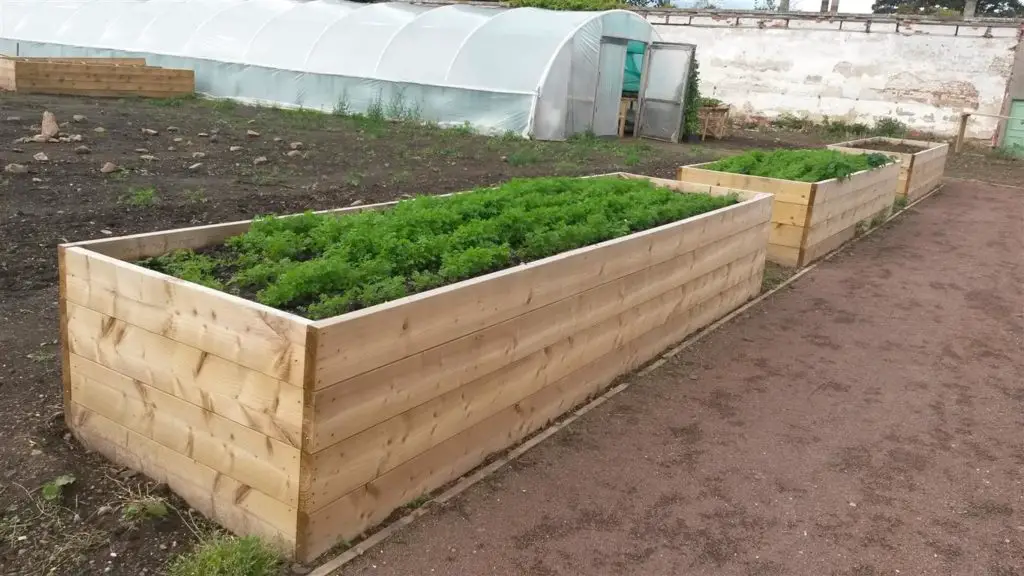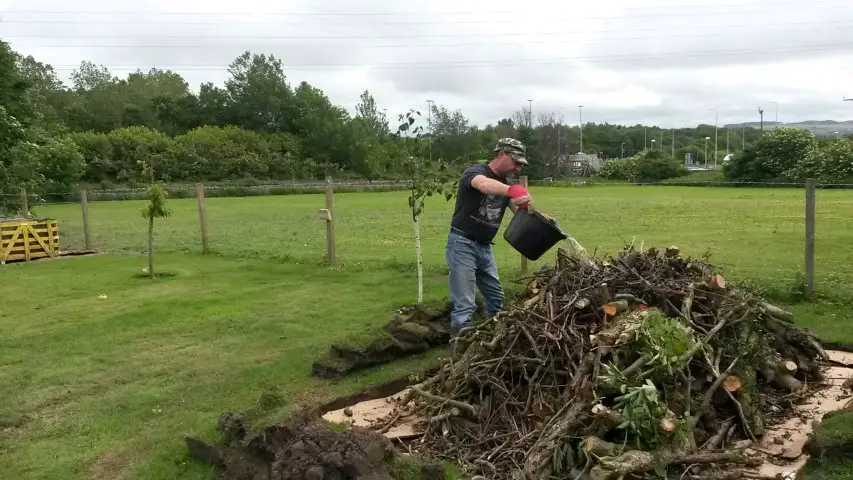Gardening for seniors can be especially difficult if using traditional methods like row gardening. However a Raised Bed Garden can transform a potentially painful experience into a real pleasure, especially for the vegetable gardener.
As I have been finding out to my cost, getting more advanced in years may have its advantages in acquired knowledge, but most definitely has its disadvantages when it comes to aching bones!
Gardening in particular can become a real trial or ‘test of endurance’ if you throw aching knees or back, into the mix.
Traditional gardening has always been closely associated with hard physical work, albeit a pleasure for most keen gardeners.
However, as I have discovered over the years, there are easier ways to garden or indeed grow vegetables and still keep fit and healthy whilst doing so.
I now almost exclusively grow my vegetables in Raised Beds, for a variety of reasons and not just because my knees ache!
- Easier on the back! As suggested a Raised Bed garden means no more bending over constantly to tend the veggies.
- Easier on the knees. No more crawling around the ground kneeling on sharp stones, or having to use knee pads or cushions for knee protection
- No more weeding. For the first season at least the Raised bed garden will not produce may weeds as the mix is weed free. Also even when the weeds finally start growing they are easy to pull out of the compost mix.
- No heavy tools. The raised bed concept is also known as a no-dig garden method because there is no heavy spades, garden forks, cultivators etc needed. Some small hand tools are all that is needed to work a raised bed if it is set-up correctly
- Wheelchair accessible. A raised bed can be built-up to almost any height meaning that you can raise it to such a level that the garden can be maintained from a wheelchair or mobility scooter.
- More productive overall. Studies have shown that raised beds are more productive than traditional row gardening techniques because they offer better drainage, more nutrients, the soil is less compacted and a raised bed is warmer than the cold ground meaning it has a longer growing season.
Raised Bed Garden Plans & Methods
Building a raised bed
The actual construction of a raised bed need not be complicated at all. At its core you are only constructing a frame-work into which you are going to add a mix of materials to grow vegetables or flowers/herbs in.
You can start by using the Square Foot method, which is simply a wooden frame 4 foot by 4 foot square with a grid frame added to separate it into 16 squares as in the picture.

Although this frame is only 6 inches high (150mm), you can in effect make it any height you wish by the addition of corner posts for support.
The advantage of this gardening method is that the 4 foot square bed is easily accessible from the sides, and in the case of the shallow bed, it will no get compacted by stepping on it.
A traditional Raised Bed structure is usually more rectangular at 9-foot-long by 4 foot wide. Again the width is determined by the fact that you should be able to reach the middle without stretching – and maybe putting your back out!
The height like the 4×4 bed can be whatever you require to be comfortable with, or that gives better access.
Another determining factor with both these Raised Bed types is that the soil has to be deep enough to accommodate the vegetables you plant to plant in them.
Deep-root vegetables for instance like the Parsnip will need a suitable depth of soil to accommodate the long roots.

Raised Bed Garden soil mixture
The real secret of success with a raised bed is the soil mix. This is not your classic garden top-soil, which would get compacted and difficult to use over time.
The soil mix for a raised bed is critical to its success – and your reward at the end of the day.
The soil has to be light, friable (easy to work) with free drainage and just the right amount of nutrients for your veggies. Whilst there are a few choices of mixes, the basic mix that will suit most raised beds is 1/3rd compost, 1/3rd topsoil, and 1/3rd vermiculite or pearlite.
This mix can of course be varied for instance if you want a sandy mix for growing carrots however the basics remain the same. A plant needs a complex mix of nutrients to thrive including the macronutrients Nitrogen, Potassium, Calcium, Magnesium and Sulphur.
In less demand but crucial nevertheless are the micronutrients iron, zinc, boron, copper, manganese, molybdenum and chloride.
More Infill mixes that contain a variety of these essential nutrients can be found in this article.
Filling a deep bed cheaply
This can be an expensive process especially if the bed is 30-36 inches deep! However, to keep the expense down is a simple matter.
Consider the plants you wish to grow – for instance 90 % of your veggies will grow in 12 inches or less of soil – and fill the bottom of the bed with rubble, broken bricks etc.
Alternatively you can operate a version of what is called a ‘hugelkultur’ more details on this link.

Basically however you are filling up the ‘dead space’ with organic material such as fallen lumber or straw/leaves, that will break down over time to in effect add to the nutrients in the raised bed over the following years.
The main thing NOT to do, is fill up the dead space with material that will hinder drainage such as subsoil which is full of clay. This will in effect destroy your efforts and lead to the area becoming unusable for vegetable growing.
Treated or Untreated timber for a raised bed?
The main thing to consider is how long do you wish the raised bed to last? If you’re in for the ‘long haul’ then I would use either a pressure-treated tanalised timber, or a natural rot-resistant timber such as cedar, oak, walnut, redwood, or cypress for example.
The issue regarding using treated timbers for raised beds, in general relates to the possibility that the chemical treatment will leach back into the vegetables – particularly arsenic.
Up until 2003 when it was discovered “certain plants grown in raised beds constructed with CCA-treated wood accumulated arsenic (basil, beets, beans, lettuce, tomatoes, and zucchini) or chromium (beets, cabbage, cauliflower, kale, leek, onions, and radishes”. credit
Chromated Copper Arsenate producers cancelled residential uses of CCA and it is now a restricted material, not applied to lumber for residential use.
For more detailed information on the use of treated lumber for raised bed and other outdoor projects then this article should help.
should help.
The bottom line is that even untreated soft-wood timbers will give you perhaps 5 years of usable life for your raised bed. This compares to aludized metal beds that will give over 20 years use.
If you use cedar or oak then they can easily last 15-20 years or more depending on your situation.
If you do wish to use treated lumber and you have any concerns about the preservative leaking into your raised bed, there is a simple solution. Line the inside of the bed with a plastic membrane – a builder’s plastic floor membrane would do it.
This will also prevent the wood from sucking up the moisture from your bed which can be a concern in dryer climates.
Summary
I have to admit however that there is 1 disadvantage to using Raised Beds for the elderly that I could come up with – the cost.
The fact is that if you have good garden soil then it costs nothing to just get on with growing stuff!
However there is more than material cost involved when you consider a Raised Bed method for growing your veggies, as the list above highlights.
Keep in mind also that this is a one-off cost (or at least for several years), and the benefits over traditional gardening methods are indeed many.
In fact if cost is a concern, you have to factor in not just the cost of building a Raised Bed, and filling it with a suitable material – but the savings in tools and other materials that you will not need.
Add to this the extra production in vegetables for the table that you can achieve with Raised Beds, and the savings in labour and medical costs for backache!
You can also greatly reduce the infill costs by making your own compost cheaply and effectively as in this post.
Then you may well decide that is more expensive NOT to operate a Raised Bed system for growing your vegetables.
For the elderly and infirm or those restricted to a wheelchair, then this method is particularly attractive as it allows then to participate in what is after all one of nature’s most rewarding gifts – the ability to grow things, and connect with the environment in a real and living way.
You might also like these no-dig methods for growing vegetables.

